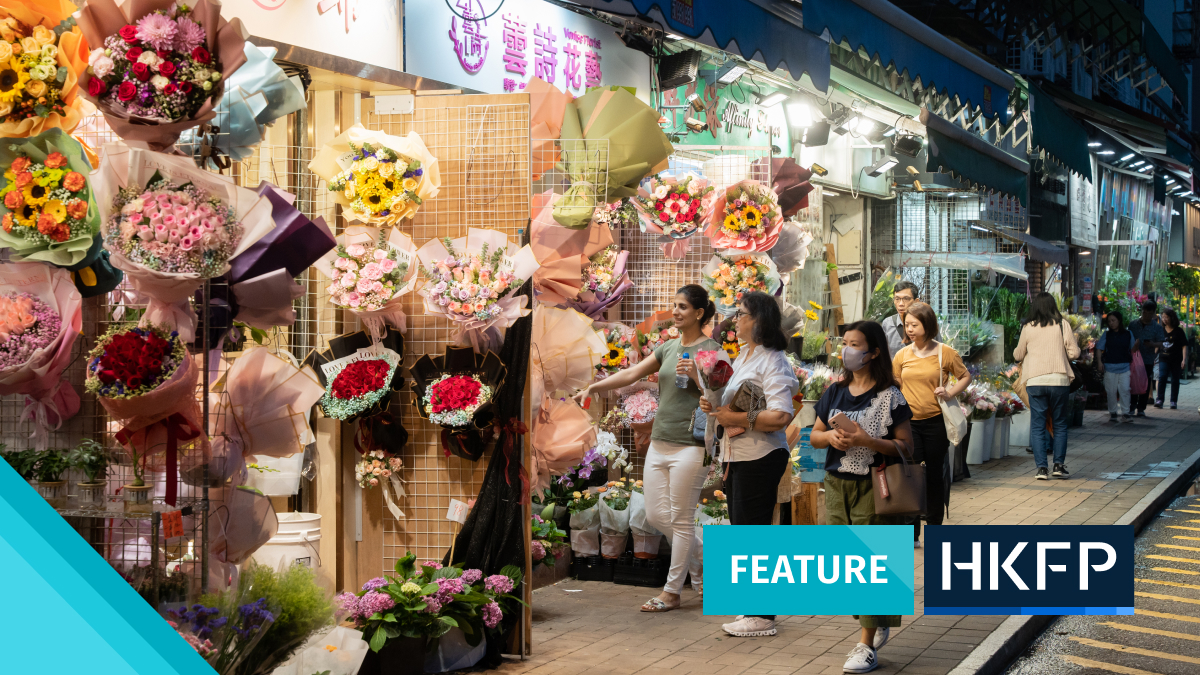On a Cathay Pacific flight from New York to Hong Kong in July, the four people on the flight deck were discussing their plans to leave the city’s flagship airline.

Benjamin, an airline captain, told HKFP about that conversation in a cafe in Central soon after disembarking. It was not, he said, an uncommon topic. “There was one guy that’s staying with Cathay, but everyone else is leaving,” he said, adding that a pilot exodus from the airline had been going on for three years already.
An experienced pilot from the Royal Australian Air Force, Benjamin, who asked to use a pseudonym, joined Cathay in the 1990s. At the time, the Hong Kong carrier was a popular choice among foreign pilots. “It was the highest pay, the highest standard, and the most difficult to get into,” Benjamin said.
| 💡HKFP grants anonymity to known sources under tightly controlled, limited circumstances defined in our Ethics Code. Among the reasons senior editors may approve the use of anonymity for sources are threats to safety, job security or fears of reprisals. |
But, he added, everything had changed since 2020 – and he had decided to quit.
After surviving almost three years of stringent Covid-related travel restrictions that brought Hong Kong travel and tourism to a standstill, Cathay Pacific announced plans to fast-track its recovery.

On Wednesday, it posted its first half-year profit since pandemic, vowing to “share the success” with its staff. It has also set a target of restoring 70 per cent of its pre-pandemic passenger flight capacity by the end of this year, and 100 per cent by the end of next year.
However, according to several pilots HKFP spoke to, for them, the journey ahead looks less promising.
Paul Weatherilt, chairman of the Cathay pilots’ union the Hong Kong Aircrew Officers Association and a captain with Cathay, told HKFP he was very worried about what he termed a massive shortage of pilots, especially senior ones.
According to union estimates, nearly 1,000 pilots resigned over the past three years and most of them were senior staff – experienced captains and those providing training to junior ones.
“Cathay has a privileged position… It’s Hong Kong’s airline, but they haven’t really done enough to address the shortage of pilots, ” Weatherilt said, sitting in the union’s Tsim Sha Tsui office. The downturn began in 2020, he added, saying it stemmed from pay cuts, a loss in trust, and the union’s paralysed relationship with the company.
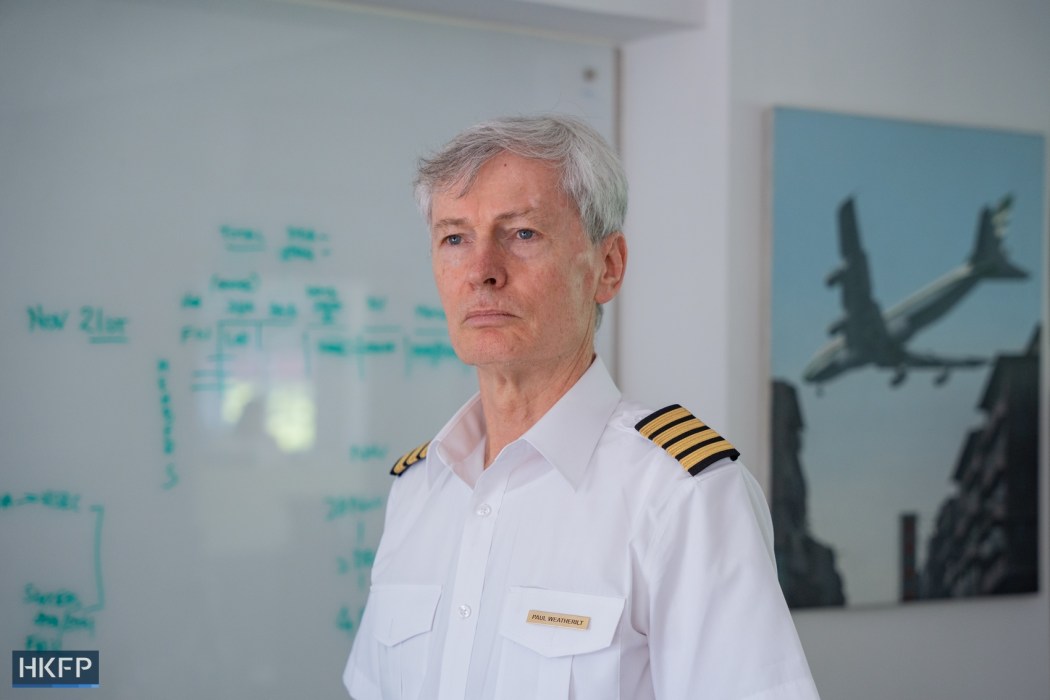
In an interview with HKFP, Jack Bennett, general manager for aircrew at Cathay Pacific, said he could not provide pilot resignation figures for the past three years, but said the airline “has sufficient pilots to support our current schedule.”
“I think it’s not a secret that the morale has taken a hit over everything that’s happened in the last few years,” Bennett said. “What we’re focused on is trying to rebuild the business trying to get as many of our crew back up and flying, get the promotions going and get the careers back on track… so that they can benefit from the productivity elements of the contract.”
A ‘proper’ contract
After flying with Cathay for over 30 years, Ethan, an Australian who also requested to use a pseudonym, resigned as a senior captain in the summer of 2022 to join another airline as a second officer – third in command on the flight deck.

It usually takes around 10 years to become a captain, progressing through the ranks from trainee to second officer, first officer, and then captain – of which there are several ranks. But leaving one airline for another often means starting all over again from the bottom.
All Ethan wanted, though, was “a proper contract,” one which he felt fairly reflected his workload and offered stable terms.
In October 2020, with the pandemic raging around the world, Cathay gave its pilots an ultimatum: sign a new contract or leave the company within two weeks. It also announced the closure of regional carrier Cathay Dragon, as well as 5,900 redundancies across the company, including all 550 Cathay Dragon pilots and some 80 pilots for Cathay Pacific.
That new contract had been introduced for new joiners in 2018, and around 700 pilots have been hired since its implementation, according to Bennett. After Covid hit, it was extended to the entire crew.
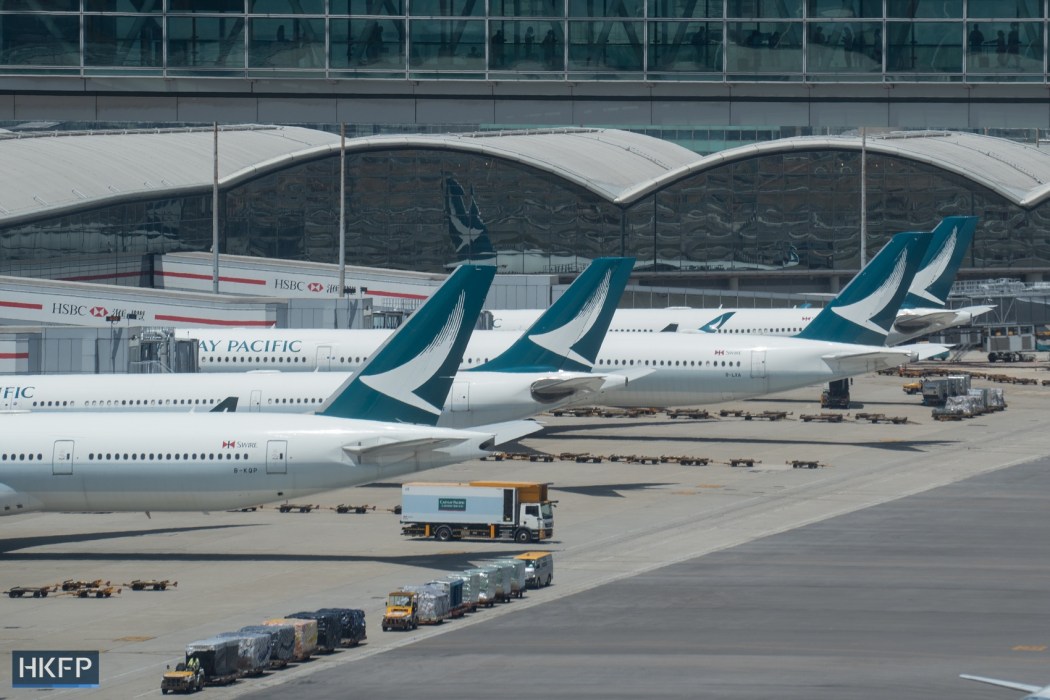
According to the union, the new arrangements resulted in a pay cut of up to 60 per cent during the pandemic, and 25 per cent once pilots were back flying. The company pension contribution was reduced by 35 per cent and the education allowance was slashed by up to 50 per cent.
The generous housing allowance offered to some on older contracts was replaced with a reduced fixed allowance, with Cathay providing a transitional allowance for those moving to the new contract.
More importantly, the new contract changed the way pilots were paid: from a guaranteed salary to a more flight hours-based system, at least 30 per cent of which is what the company calls “a productivity pay”. At Cathay, flight hours are subject to the company’s roster and are out of the control of pilots.
Cathay’s Bennett acknowledged that the contract had been “a big adjustment” for aircrew.
Terms ‘may be varied’
All the pilots interviewed by HKFP said their current terms of employment were based on a staff handbook rather than a fixed contract.
A copy of the Cathay Pacific Employee Handbook for Pilots obtained by HKFP listed salary rates and allowances for different ranks of pilots, and said that those benefits and allowances “may be varied or amended by the Company from time to time”.
When Cathay introduced the new terms, Ethan said his total package was reduced by 50 to 60 per cent. But with the global aviation industry grounded by Covid, he had no choice but stay.

Like Ethan, many pilots agreed to the new contract conditions in 2020 despite disappointment and anger at the new terms. As international travel started to recover in 2022 – and Hong Kong remained isolated – and other top airlines resumed recruitment, a wave of resignations swept through the aircrew.
When an offer came in for Ethan from another top airline in 2022, he made up his mind to leave Hong Kong, a place he once called home and where his three children were born.
A weak position
According to the union, before the pandemic the Cathay group had a total of 3,835 pilots, including those from Dragon. While Cathay took over many Dragon flights routes after the latter’s dissolution, the carrier currently has 2,461 pilots including 767 captains, 54 per cent of the pre-pandemic level.
Bennett confirmed the airline had around 2,500 pilots currently. He said that included 250 former Cathay pilots who had returned to the airline.
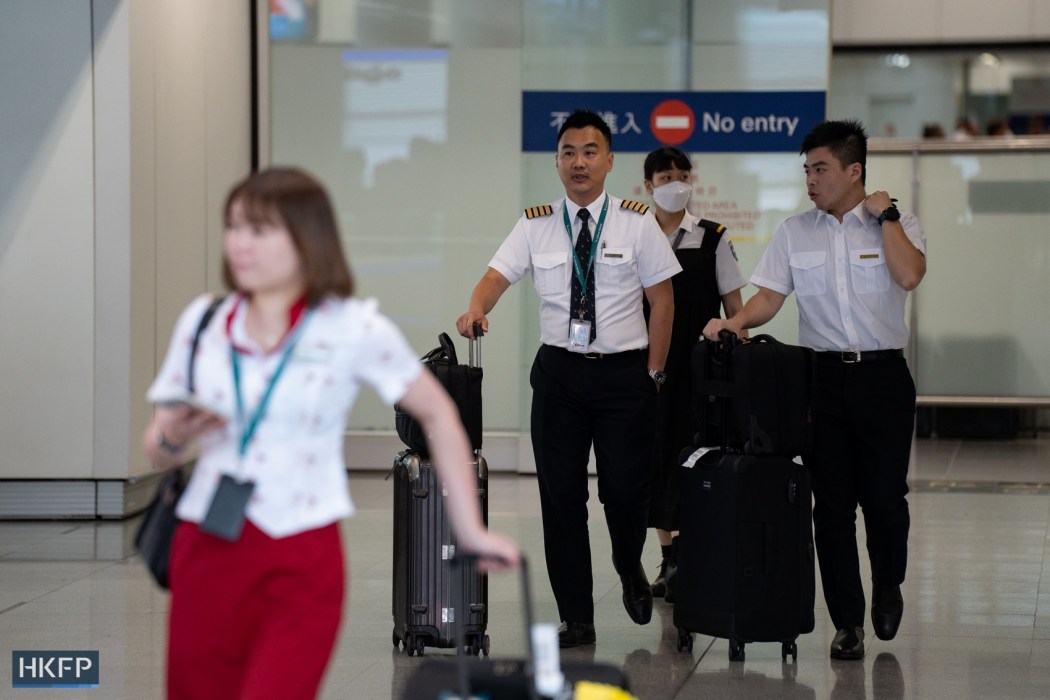
In January 2021, Cathay said 2,613 pilots had accepted the new contract. According to Weatherilt, that figure showed that Cathay had failed to increase crew numbers amid pilot resignations.
Back in 2020, the union, which then represented over 70 per cent of Cathay’s pilots, proposed a different approach to “keep the team together” during the pandemic.
Mason, a senior pilot from North America, who was actively involved in those negotiations, told HKFP that in early 2020 most union members had agreed to take a 50 per cent pay cut and no paid leave for two years to help the company out, but Cathay showed no interest in this approach. He also requested to use a pseudonym.
In July 2020, the union was informed that the company would be terminating its recognition agreement on October 14. According to the agreement, signed in 2013, the company recognised the union as the sole representative of its pilots.
Within a week of the recognition agreement ending, the carrier announced its new contracts to “ensure the Group’s survival.”

Mason learned of Cathay’s redundancies and new contracts through news reports, and thought it was not the time to fight the company while the aviation industry was crippled by the pandemic.
“If we appear to be fighting, we’re going to look as though we’re trying to destroy the company,” Mason said, “but you could see it coming. You saw everything coming. That they’re just taking over.”
Weatherilt said the company took a big step to cut manpower costs permanently while the pilots were “in a weak position”, a move that seriously eroded trust in the company.
‘Everyone is angry’
Mason signed the new contract with Cathay, mainly because he did not want to start again from the bottom at a new airline.
But he said he now felt “stuck” in a company where morale was low and the working environment was “toxic,” a word used by several of the pilots HKFP spoke to. During flights, both aircrew and cabin crew often complained about the company, Mason said.
With the new contract, flight attendants also suffered a significant pay cut. According to the flight attendants’ union, cabin crew saw a 14 to 36 per cent pay cut, with the basic monthly salary of junior attendants capped at HK$9,100.

“It’s non-stop. Everyone is mad. Everyone is angry,” Mason said, adding that the culture had been different when he joined about 10 years ago.
Looking back at the union’s approach in 2020, Bennett said the company had been focused on how to withstand Covid.
“We we were in survival mode. And nobody knew how long the pandemic was was going to go on, and quite how much of an impact [it] would have particularly for us in Hong Kong, for Cathay Pacific,” Bennett told HKFP.
Like many airlines globally, Cathay took a severe hit during the pandemic and accepted a HK$39 billion government-led bailout in June 2020, which the airline has to buy back in the form of preference shares. In an emailed response, Cathay said the group had lost HK$34 billion in the past three years.
Bennett said the airline had made a few changes this year to ensure competitive renumeration, such as increasing the basic salary by 3.3 per cent, improving several pilot allowances, and offering a bonus of up to six-weeks’ pay. In 2022, the airline raised average pay for aircrew by 1.5 per cent and provided a discretionary bonus of up to one-month pay to eligible staff, he added.
Natural evolution
Yuen Chi-lok, a senior lecturer at the Chinese University of Hong Kong specialising in the aviation industry, told HKFP that while demand for air travel had recovered, supply as far as Hong Kong airlines were concerned was restrained by a manpower shortage.
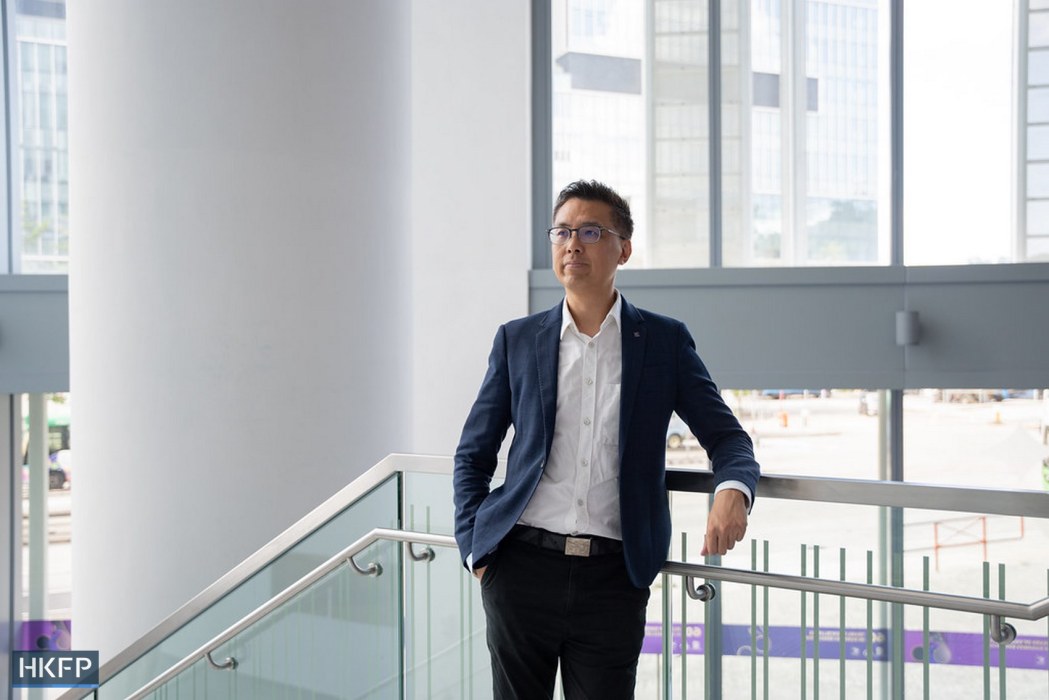
“Pilot recruitment is subject to the rules of the free market. If the carrier cannot hire enough pilots, in the end it has to raise salaries,” Yuen said, speaking in Cantonese. He said Cathay should also consider the valuable role unions played in improving staff morale and developing a corporate culture.
However, Shukor Yusof, an aviation industry adviser, said Cathay “is not really rushing to go back to 100 per cent full capacity”, but rather was focused on restructuring.
“If you want to be very honest, they have taken the opportunity of Covid to slim down… to become a leaner airline… to get rid of unnecessary staff, and to reduce costs,” Yusof told HKFP by phone. A former aviation reporter, Yusof is the founder of Singapore-based aviation advisory firm Endau Analytics.
Founded in 1946 and one of the oldest airlines in Asia, Cathay used to rely heavily on expat pilots, when Hong Kong had few locals to fill the posts. However, Yusof said those expats were very expensive.

In order to survive long-term, Yusof said Cathay must hire cheaper local pilots, which would also align with its repositioning as a Chinese airline.
“Whether we like it or not, there is stronger political pressure from mainland China to bring Hong Kong closer to China… Cathay Pacific may no longer be the same airline as it was 10 years ago… it has become more of a mainland airline than a Hong Kong airline,” Yusof said.
Under the contract introduced in 2018, there are no more expat packages. Mason, the pilot from North America, acknowledged those packages might have been “a bit generous”, but he said people often had a false impression of how much pilots earned.
According to Weatherilt, the most senior training pilots, of whom there are about 50, could have earned up to HK$3 million annually, including allowances, before 2020.
“That’s really a small group of pilots, those who joined the company probably 30 years ago,” Mason said.
Before the new contracts were introduced, junior pilots could expect to start on around HK$40,000 per month, and junior captains earned between HK$120,000 and 130,000 per month.
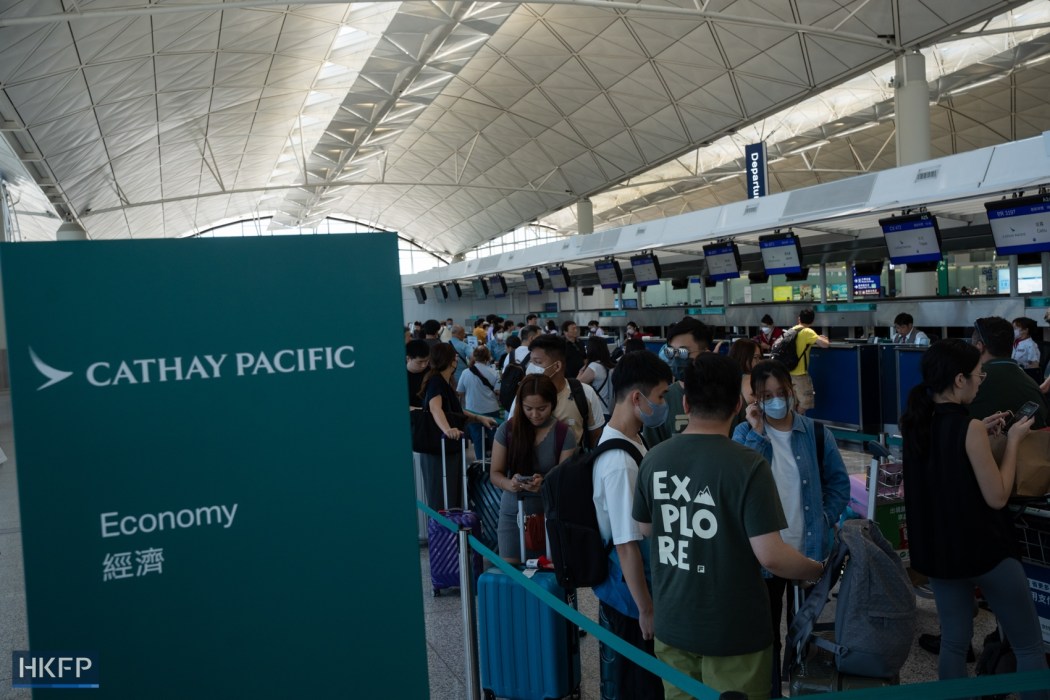
Yusof said that with the pay cuts the package was no longer attractive to pilots from Australia, the UK and the US, and the company would explore new recruitment markets in mainland China and in the rest of Asia.
“It’s a natural evolution… [Cathay] will remain a very strong international airline but the make-up of the employees in future will be more Chinese than foreigners.”
New joiners from mainland China
Mason acknowledged the sentiment. “It’s like getting rid of expats here. If you’re gonna stay here, you’re gonna follow this rule… There is no more fighting,” he said. “It’s a feeling of Hong Kong, not just Cathay.”
Launched in 1988, Cathay’s Cadet Pilot Programme has, for the first time, opened its door to mainland Chinese applicants this year. Previously, only Hong Kong residents could apply. The group aimed to hire 800 cadet pilots by the end of 2024.
“There is no shortage of manpower in mainland China… and they will cost a fraction of the salaries that foreigners are paid,” Yusof said.

Responding to why the airline took this move, Bennett said Cathay “always had an intention to recruit a portion of our crew from the mainland,” adding that it also hoped to share its knowledge and expertise with more people.
Weatherilt said the cadet pilot training programme was a good plan for the future. “It’s a 10 to 20 year plan,” he said.
But to solve the immediate pilot shortage, Weatherilt said the company must address concerns over reduced wages and low morale.
Comparing the number of flights and available seat miles of Cathay Group in June 2019 and Cathay Pacific in June 2023, the current capacity is at 49 per cent and 51 per cent of pre-pandemic levels.
According to Cathay, the group was close to 60 per cent of pre-pandemic levels, including the capacity of HK Express, which was acquired by Cathay Pacific in July 2019.

“We are always happy to help. We helped during SARS in 2003. We helped during the global financial crash in 2008. At the end of it, we were back on, we were on the same contracts,” Weatherilt said. But currently there was no official dialogue between the union and the company, and he had turned to the media to address the issue.
“It’s dysfunctional because the more I speak to the press, the less [Cathay] want to speak to me, ” Weatherilt said. Currently, the union represents 50 per cent of the aircrew.
“At the moment, we feel the most efficient way to [communicate with the pilots] is to talk to our crew directly, ” Bennett said. “But, you know, when the union writes to us, we always respond to them, when they ask for meetings, we will meet with them.”
Bennett said the flagship carrier needed to be competitive and efficient.
“We understand that there are reasons for leaving… when there’s been such a big change, and we respect those decisions. But we have to be competitive, right? When we look at our competitors, not many of them are offering the kind of pay that our old contracts did… And that’s why we see a lot of people coming back,” Bennett said.
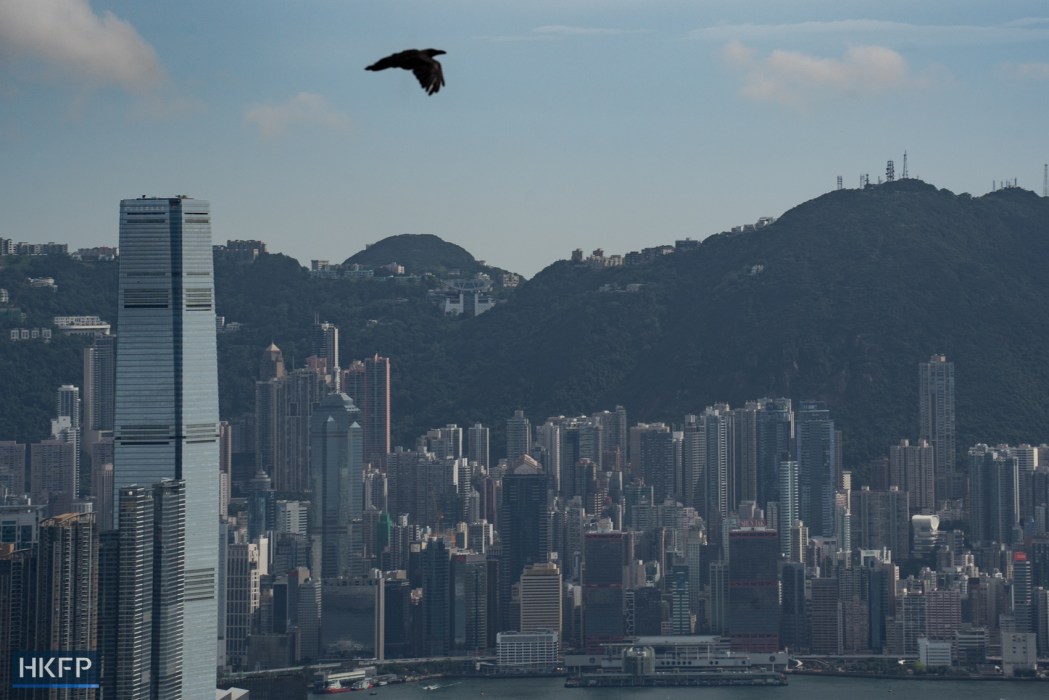
But Benjamin said he did not think things would improve.
“When you walked through the airport with your Cathay uniform, you felt like everyone knows…your profession is of a very high standard,” Benjamin said. “That’s all gone and that will never come back.”
He said he hoped the company would learn to value experienced pilots. Compared to decades ago, planes are very safe, he said.
“But if something goes wrong, when there’s a typhoon, when the aeroplane loses an engine, or there’s a bomb on board… that’s why we get paid. It’s kind of like insurance. So we’re there in case something really bad happens, we can manage that issue and everyone will still survive.”
Support HKFP | Policies & Ethics | Error/typo? | Contact Us | Newsletter | Transparency & Annual Report | Apps
Help safeguard press freedom & keep HKFP free for all readers by supporting our team

Original reporting on HKFP is backed by our monthly contributors.
Almost 1,000 monthly donors make HKFP possible. Each contributes an average of HK$200/month to support our award-winning original reporting, keeping the city’s only independent English-language outlet free-to-access for all. Three reasons to join us:
- 🔎 Transparent & efficient: As a non-profit, we are externally audited each year, publishing our income/outgoings annually, as the city’s most transparent news outlet.
- 🔒 Accurate & accountable: Our reporting is governed by a comprehensive Ethics Code. We are 100% independent, and not answerable to any tycoon, mainland owners or shareholders. Check out our latest Annual Report, and help support press freedom.
- 💰 It’s fast, secure & easy: We accept most payment methods – cancel anytime, and receive a free tote bag and pen if you contribute HK$150/month or more.
MORE Original Reporting
HKFP has an impartial stance, transparent funding, and balanced coverage guided by an Ethics Code and Corrections Policy.
Support press freedom & help us surpass 1,000 monthly Patrons: 100% independent, governed by an ethics code & not-for-profit.






